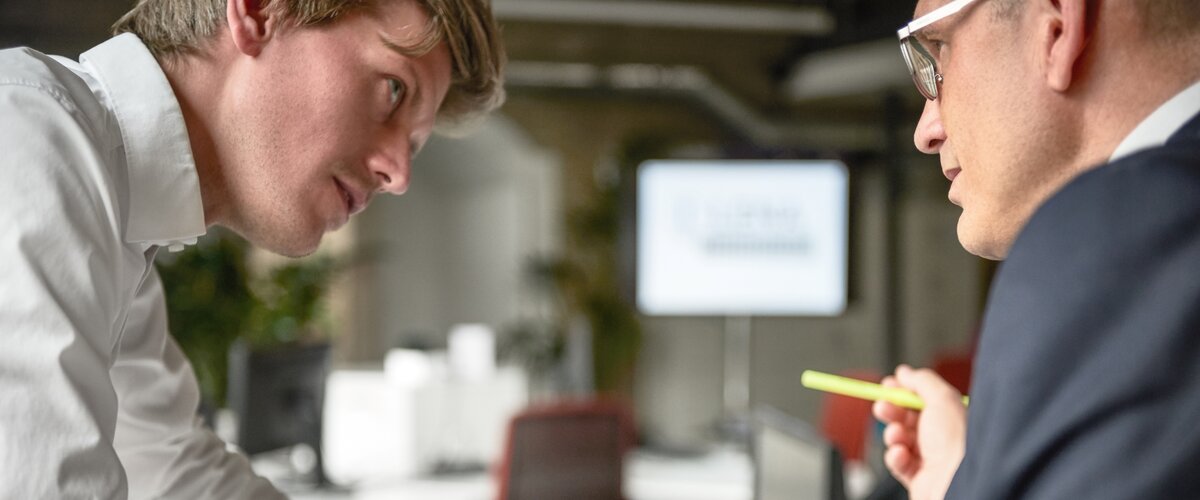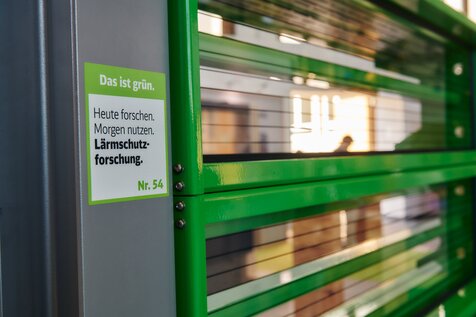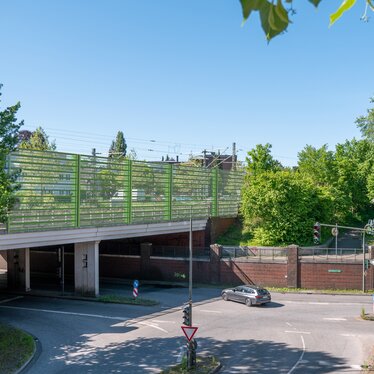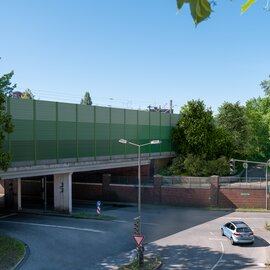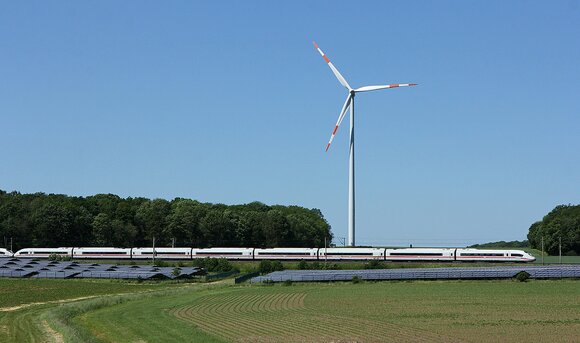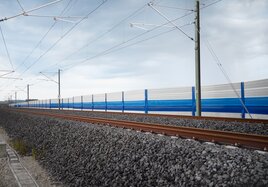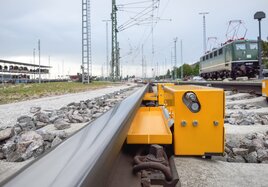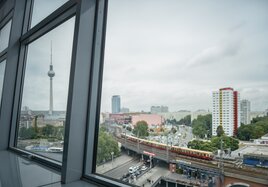For us at Deutsche Bahn, more traffic on the Strong Rail means thinking about the people who live along the tracks. We want it to be even quieter for residents living along our lines in the future. We are involved in various research projects and test new noise-reducing technologies in order to gain new insights for local noise control measures.
Noise barriers with a view
Conventional noise barriers are very distinctive and do not fit into the cityscape everywhere. The DB Bahnbau Group has developed an innovative solution to this problem together with the startup Phononic Vibes. The so-called MetaWindow is a transparent noise barrier made of Plexiglas modules that blends in visually with its surroundings while offering comparable sound-absorbing properties to conventional non-transparent walls. The new noise barrier is being used for the first time as part of a company trial in the major S4 project in Hamburg. If the MetaWindow proves its worth in everyday operation, more of these transparent noise barriers could be used in the near future.
The following visualization shows how the MetaWindow fits into the cityscape.
EU research programs Shift2Rail and Europe’s Rail
The aim of the European Shift2Rail program was to develop new technologies and solutions for rail transport. Working together with our partners, other rail operators, companies and research institutes from across Europe, Deutsche Bahn successfully participated in the development and acoustic evaluation of innovative technologies and methods regarding noise reduction. This included, for example, virtual reality (VR) software that allows various noise reduction measures to be experienced and compared audiovisually (link to demonstrator). We also developed methods to better calculate and identify individual sources of noise. This will enable rail vehicles to travel even more quietly in the future.
In the Rail4Earth project of the follow-up program Europe's Rail, we are currently investigating the effectiveness of vibration reduction measures.
Testing innovative noise reduction in real-life conditions
In 2016, together with the German Federal Ministry of Digital Affairs and Transport (BMDV), we launched the "Initiative Lärmschutz-Erprobung neu und anwendungsorientiert" (I-LENA - New and Application-Oriented Noise Abatement Testing Initiative). By 2020, around 30 of the more than 60 ideas submitted for innovative noise abatement technologies had been selected and tested real-life conditions. These included new types of noise barriers and improvements to the work of rail grinding and rail damping. We also studied solutions for minimizing curve squeal, rail bridges' structure borne and construction noise. The goal of I-LENA was to promote exceptional concepts and ideas in noise reduction, and also to accelerate the process of developing application-ready, marketable products.
Innovative freight cars for less noise
As part of the BMDV's Innovative Freight Wagon research project, we have also successfully researched technologies to make freight cars even quieter and more energy-efficient.
The cars were tested in operation, covering around 150,000 test kilometers throughout Europe. In addition to an improved environmental and noise footprint, cost-effectiveness was also increased. The innovative wheelsets with absorber rings tested in the project were successfully further developed with the manufacturer and subjected to further operational testing. This showed that the required operational capability was met, but the expected effectiveness in practical application could not be proven. This measure will therefore not be implemented.
